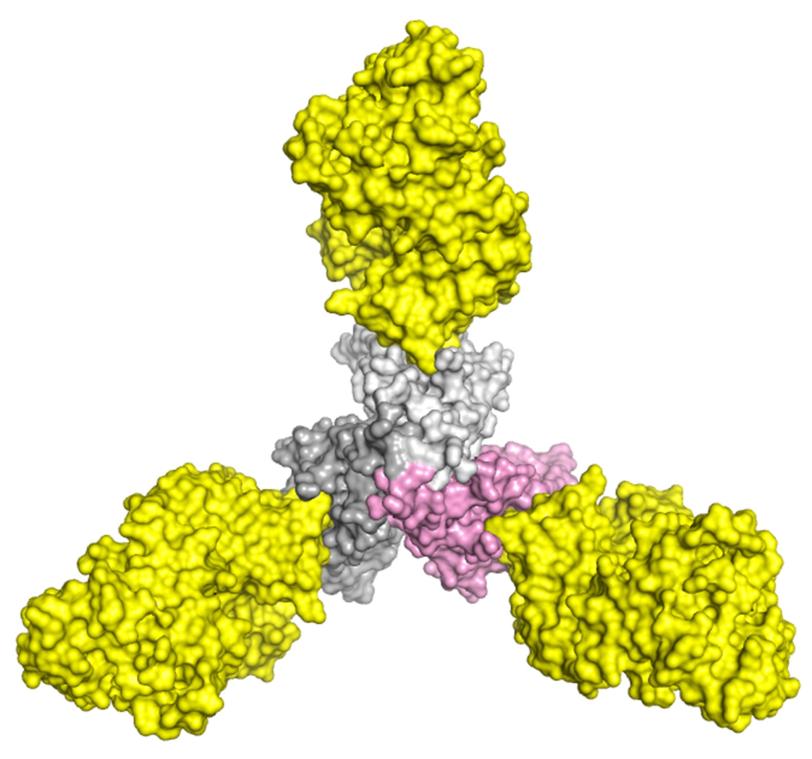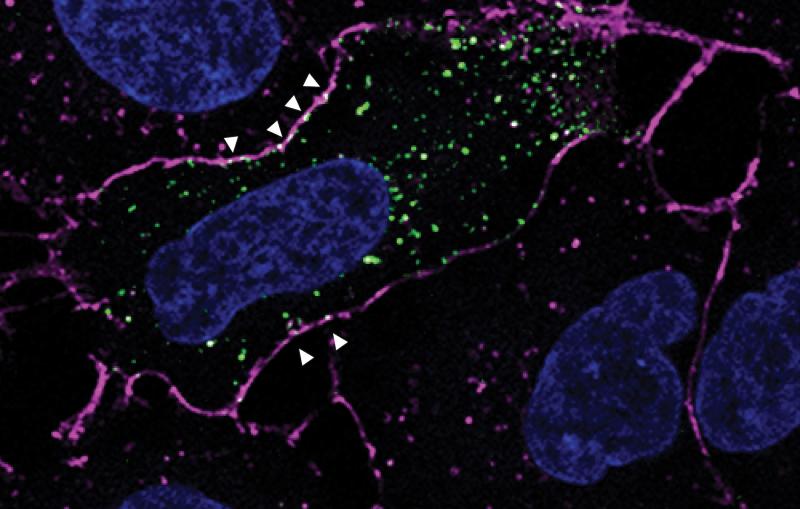Q&A: Biologist Describes Milestone toward a Universal Flu Vaccine
X-ray Studies at SLAC Synchrotron Aid in Vaccine Design
Every fall, millions of people roll up their sleeves to get a flu shot. Up to 20 percent of the population gets the flu and more than 200,000 people are hospitalized with flu complications each year, according to the U.S. Centers for Disease Control and Prevention. While seasonal vaccines provide some protection, they are not always effective because the strains of influenza virus in the vaccine may not be well matched to the flu viruses circulating that year. So researchers are searching for a way to develop a more universal vaccine that would be effective against any variety of influenza.
Scientists from The Scripps Research Institute and the Crucell Vaccine Institute have now designed a protein fragment called mini-HA that stimulates the production of antibodies against a variety of influenza viruses. A key part of the work took place at the Stanford Synchrotron Radiation Lightsource (SSRL), a DOE Office of Science User Facility at SLAC National Accelerator Laboratory, where the scientists used a technique called X-ray crystallography to look at the atomic structure of the mini-HA at each stage of its development.
Ian Wilson, a leading structural and computational biologist at Scripps and a long-time user of SSRL, led the X-ray crystallography team. We asked him to describe the team’s flu vaccine research.
Q: How are you developing a universal flu vaccine?
A: Well, it’s not a universal flu vaccine yet. But the general idea has been to develop a vaccine containing a protein fragment of the influenza virus as an immunogen, which stimulates the immune system to create antibodies that fight many types of flu at once by targeting a specific site on the flu virus that does not mutate rapidly.
Our research has identified a good target for such a vaccine on a protein called hemagglutinin (HA) that is present on the surface of all influenza viruses. The HA protein has two major components: the head portion, which mutates and varies from strain to strain, and the stem, which is similar across most flu strains. We know that the stem is the virus’s most vulnerable spot, and provokes the greatest breadth of immune response. So a synthetic version of the stem was designed, called a mini-HA, which mimicked the HA stem.
This work was done in collaboration with the Crucell Vaccine Institute of Janssen Pharmaceutical Companies, which is a subsidiary of Johnson & Johnson. Crucell engineered the mini-HA and used it to immunize mice and monkeys. These studies demonstrated that the animals developed a neutralizing antibody response to the mini-HA that protected against different types of influenza. So this was a really good first step on the path to developing a universal flu vaccine.
Q: How did you use the SSRL facilities?
A: The development of the mini-HA was a long process that involved many rounds of developing and testing multiple designs. At each step, Xueyong Zhu, a staff scientist in my lab, looked at the structure of the mini-HA at the SSRL synchrotron beamlines using high-resolution X-ray crystallography. This technique bounces intense X-ray beams off the atoms in a crystallized sample of the protein. The X-rays scatter into a detector, and by analyzing the patterns they make we can determine the atomic structure of the protein. These experiments verified that the mini-HA had the structure we wanted, one that mimicked the same stem region in the intact HA. We also verified that broadly neutralizing antibodies bind to the mini-HA in the same way that they bind to the intact influenza virus. That is important to verify if you are going to use this mini-HA as a candidate flu vaccine.
Q: What are the next steps for this research?
A: We still need to perform human trials and also want to develop a vaccine that protects against all the types of influenza that cause human pandemics, so we don’t have to worry about viruses like the bird flu that spread from animals to people. The current flu vaccine only protects against two subtypes of influenza A (H1 and H3) and two lineages of influenza B. Although we are targeting the HA stem to stimulate production of broadly neutralizing antibodies, there are still some differences between types of influenza. This makes it harder to develop a one-shot vaccine, but we’re working on new mini-HA designs.
Q: You’ve been doing research at the SSRL for almost 30 years. What keeps you coming back?
A: The SSRL is a very user-friendly facility that has cutting-edge, state-of-the art technology. We have a joint Beam Line 11-1 with Stanford University, so we’ve done a lot of development with SSRL over the years on that particular beamline. I’m the principal investigator for the Joint Center for Structural Genomics (JCSG), which has collected a lot of data at SSRL. JCSG is a consortium of five universities and research institutes: The Scripps Research Institute; Genomics Institute of the Novartis Research Foundation; University of California, San Diego; Sanford Burnham Institute for Medical Research; and SSRL/Stanford. We had a large team of really terrific people at SSRL who screened thousands of crystals, collected the data and solved the structures. The JGSC consortium solved over 1,600 structures at SSRL. Although the JCSG is now coming to an end, my lab certainly plans to continue coming back to SSRL for the foreseeable future and looks forward to solving many more exciting structures with data collected at SSRL.
Funding for the SSRL Structural Molecular Biology Program was provided by the DOE Office of Biological and Environmental Research and the National Institutes of Health, National Institute of General Medical Sciences.
Citation: A. Impagliazzo, et al., Science, August 24 2015 (10.1126/science.aac7263)
For questions or comments, contact the SLAC Office of Communications at communications@slac.stanford.edu.
SLAC is a multi-program laboratory exploring frontier questions in photon science, astrophysics, particle physics and accelerator research. Located in Menlo Park, Calif., SLAC is operated by Stanford University for the U.S. Department of Energy's Office of Science.
SLAC National Accelerator Laboratory is supported by the Office of Science of the U.S. Department of Energy. The Office of Science is the single largest supporter of basic research in the physical sciences in the United States, and is working to address some of the most pressing challenges of our time. For more information, please visit science.energy.gov.







